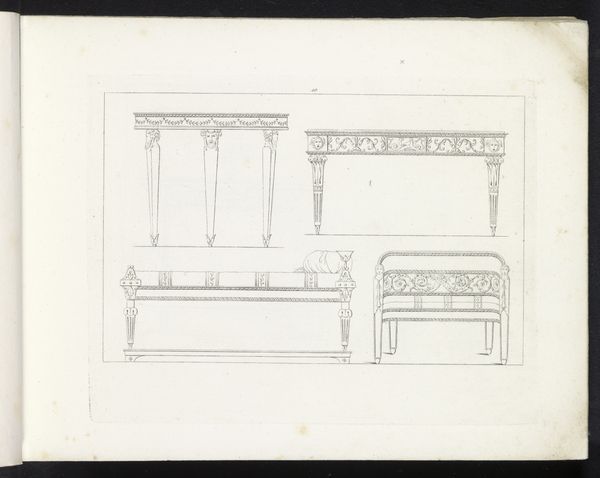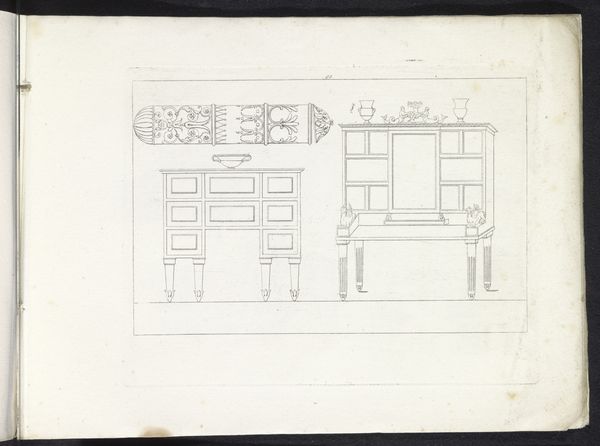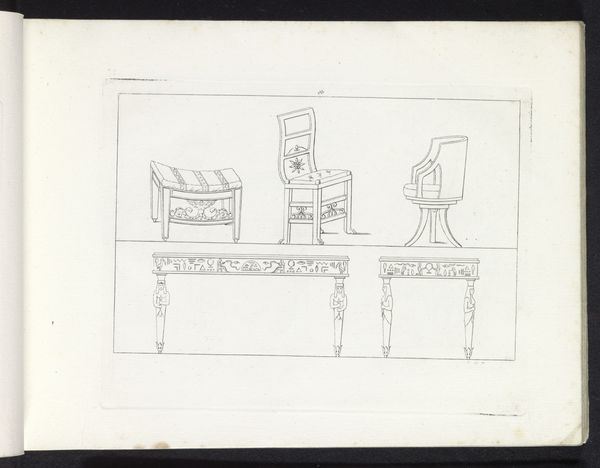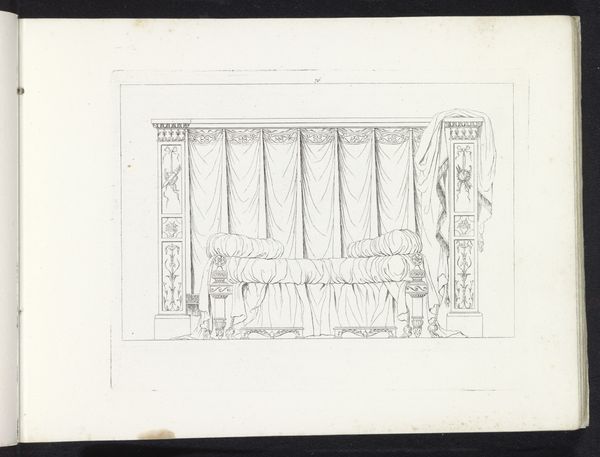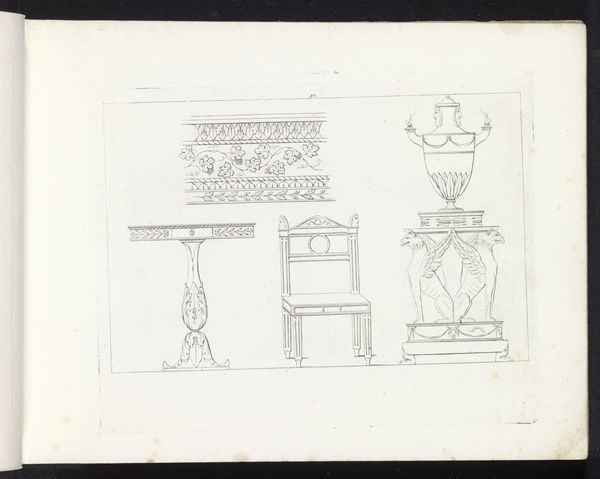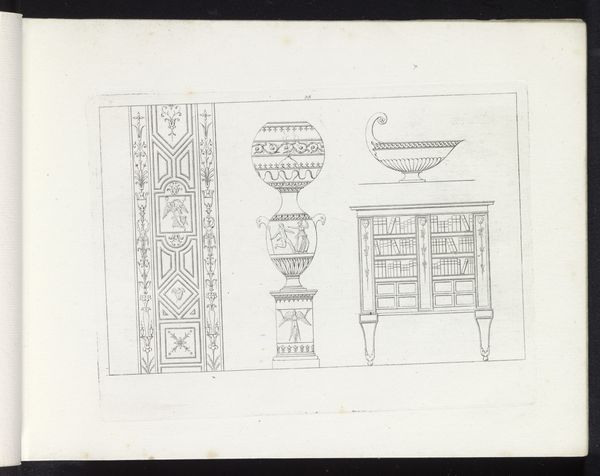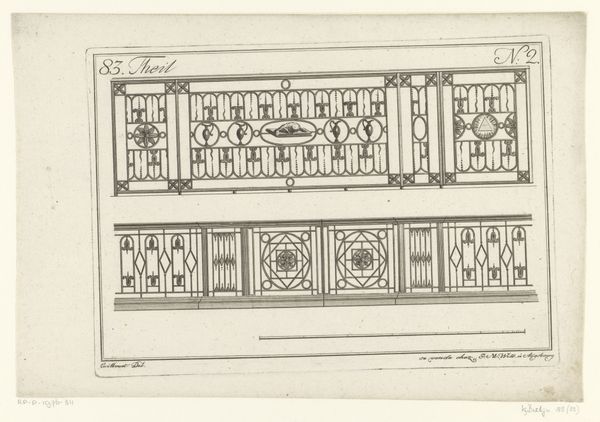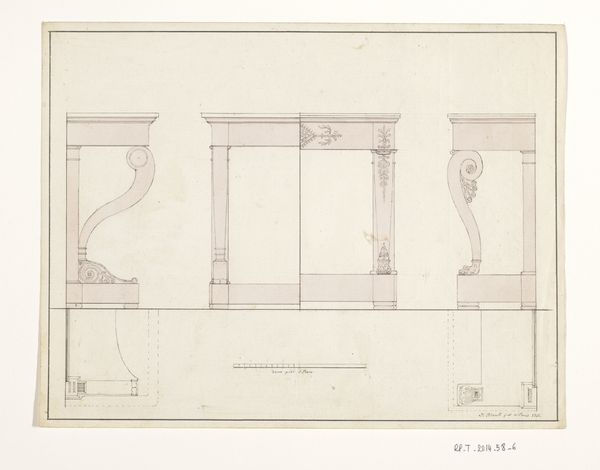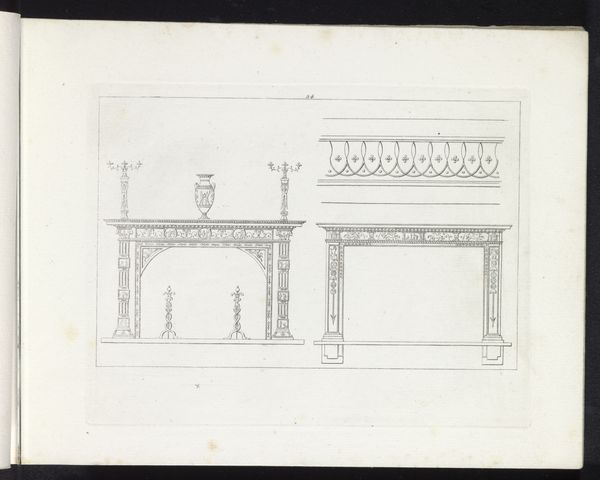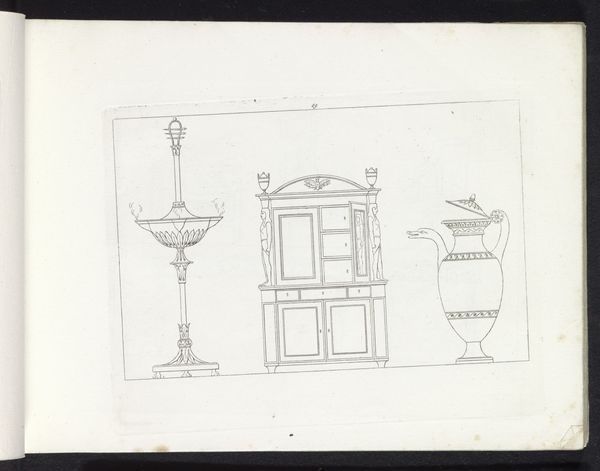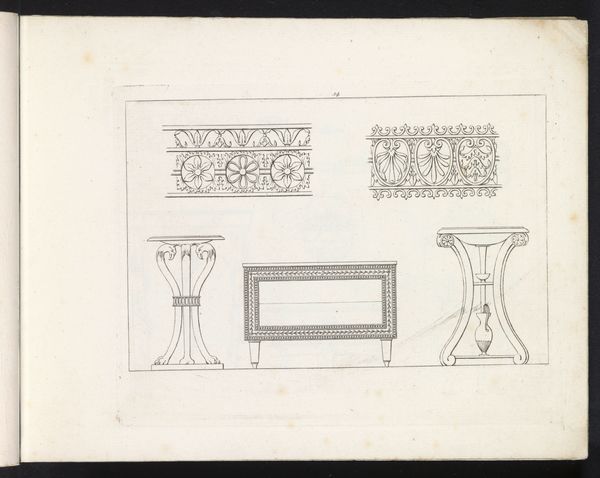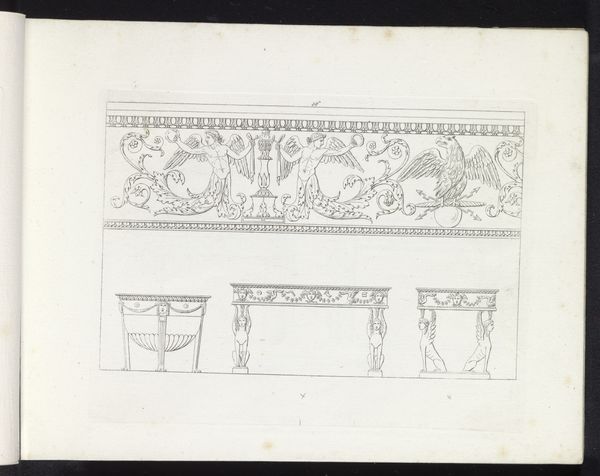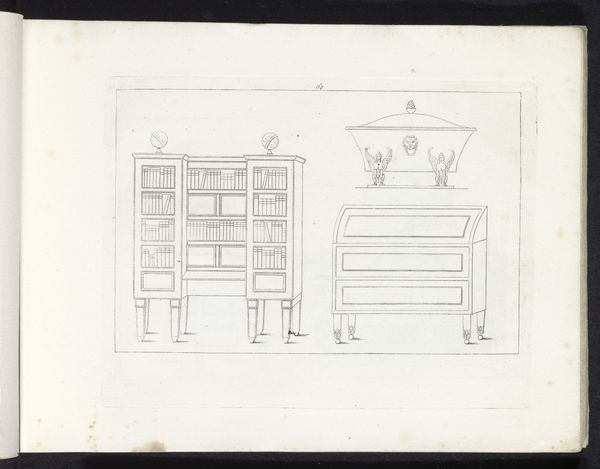
drawing, paper, ink
#
drawing
#
neoclacissism
#
paper
#
form
#
ink
#
geometric
#
decorative-art
Dimensions: height 164 mm, width 213 mm
Copyright: Rijks Museum: Open Domain
Editor: Here we have Pietro Ruga's "Two Views of a Table and Two Cabinets," created in 1817, using ink on paper. It has such a clean, precise feel. What do you make of it? Curator: The medium itself – ink, applied meticulously – is crucial here. This wasn't meant to be art in the traditional sense, but rather a detailed specification, a blueprint if you will. Think about the social context. The drawing highlights the craftsman's skills and labor involved in the decorative arts. The materiality dictates function, and in a sense, class and social function are being depicted as well. Editor: So, you're focusing on how it shows the furniture's making, not just its looks? Curator: Exactly. Notice how Ruga meticulously delineates the different compartments and embellishments of the furnishings. He emphasizes both functionality and decorative elements through the choice of materials to evoke the rising popularity and consumption of luxurious items. This blurring between utility and art pushes boundaries of "high" art of the period. What implications do you think this emphasis has on its viewers? Editor: I suppose that instead of focusing on Ruga’s artistic expression, we consider how consumer goods reflected on society in general. Curator: Precisely! And further: who had access to it? Whose labor created these objects, and for whom were they intended? Think about the power structures implicit in this cycle of production and consumption. The object’s artistic attributes themselves only convey the social conditions, making it art with both its production and societal meaning inseparable from the object itself. Editor: It's fascinating to see this drawing not as a mere design but as a historical document, reflecting labor, materiality, and social dynamics of its time. Thanks for pointing that out! Curator: My pleasure. This focus on the means of production reveals so much about the object, shifting the lens away from conventional aesthetic analysis.
Comments
No comments
Be the first to comment and join the conversation on the ultimate creative platform.
